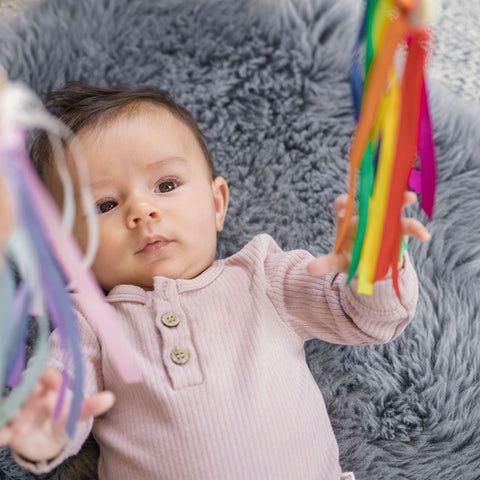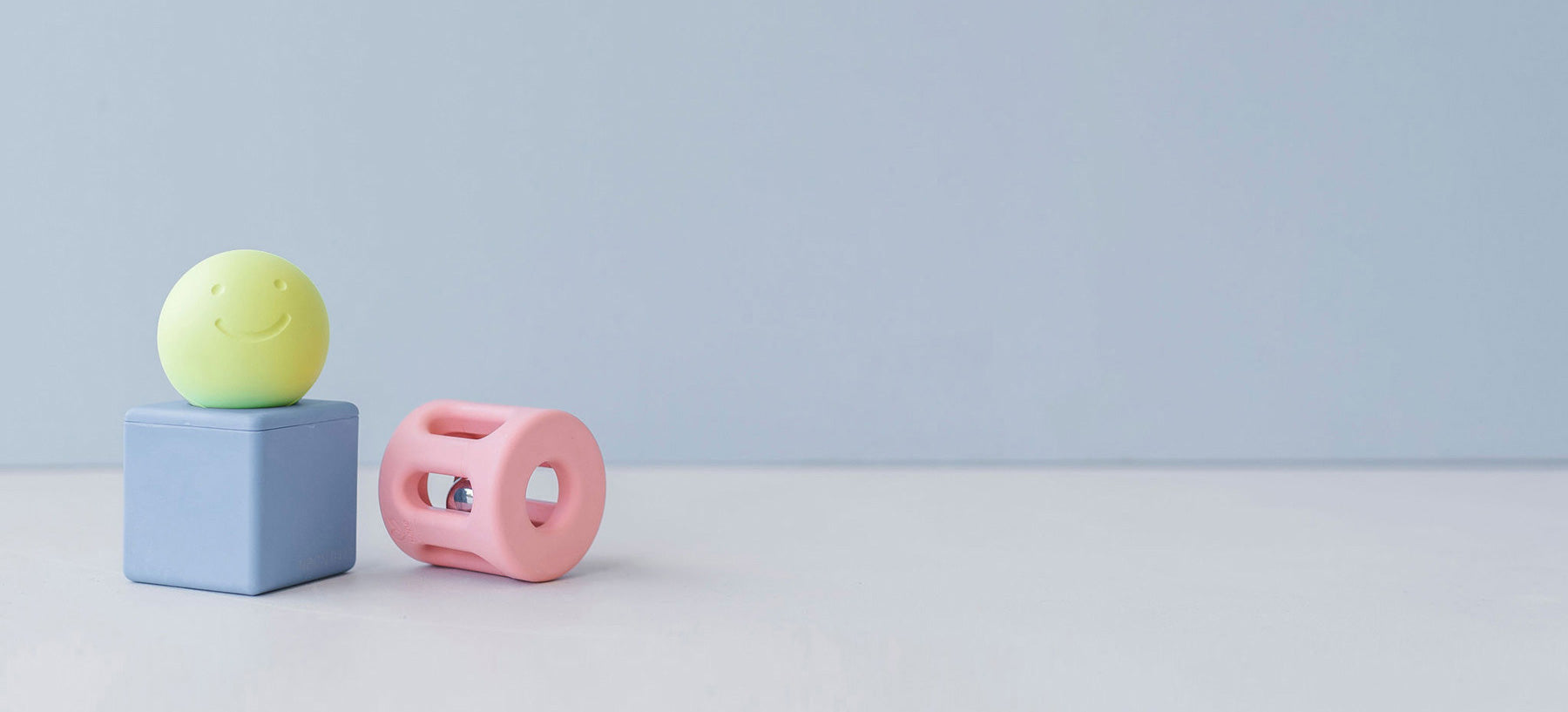The types of play
Children are driven by curiosity and they learn and develop through play.

Certain forms of play stimulate certain types of learning. When a child sees an exciting toy, they will be motivated by curiosity to explore it further. PlayLogy offers age and stage-based toys carefully curated by experts for each important stage. Exploring age-appropriate toys will stimulate and drive development as babies and toddlers interact with the items, they will learn new skills as they play.
Generally, the types of play our babies develop come in a specific order, with each type continuing to develop throughout their wonderful journey of development.
The different types of play are outlined below:
Explorative play
Explorative play uses a baby’s or child’s senses to learn the properties of objects around them. Babies use the senses to understand how an object works. In younger babies this is more specifically by touching and mouthing objects. This kind of play has no beginning and no end. It’s learning about textures – soft things, hard things, colourful or high contrast or what sounds are made. This is a great type of play from newborns right through to toddlers and children.

Cause and effect play
This is understanding the function of an object and doing the action to cause the function. For example, if I shake this rattle it makes a noise. This kind of play forms basic knowledge in behavioural learning and communication skills. It shows there are consequences to actions. An example would be dropping objects into a container, does this make a noise? How many fit into the container? Which objects make which sound?

Constructive play
Constructive play has a beginning, a middle and an end. For example, building a tower or completing a puzzle. You can identify this kind of play easily based on how it creates an end result or a finished creation.

Pretend and imaginary play
This involves children directing play away from themselves. Using real-life objects to practice the skills of living. Teddy Bear’s picnic anyone? As your little one develops, so will their imagination and what fun you will have! As they develop, they will be able to recreate experiences and create unique stories. Using toy cars or soft toys, playing shops or playing schools. The options are endless.

Social play
In the first year of life, attachment and bonding with parents and caregivers is exactly what your baby needs. A feeling of security and a safe space from which they can explore. But as they get closer to the one-year mark or older, you will notice them taking an interest in others and making friends. That’s right – baby has a social life! They will feel comfortable having you close by as they explore.
The different types of social play to identify are below:
- Solitary play or independent play, is where your child plays alone
- Onlooker and spectator play is watching others to learn how things work
- Parallel play is where children play next to each other but separately. You can encourage sharing during this time
- Associative play is play that is side-by-side with others, engaging at times but not coordinating efforts
- Cooperative play focuses on children working together to achieve a common goal, such as building a tower or completing a puzzle.
It’s useful knowing about these different play types, as you interact with your little one. As children grow and develop, so does the way they play with different toys. Children don’t need huge amounts of toys or the latest gadgets, the less toys they have the more creative they play with the ones they have. It’s incredible to see how their imaginations work and how creative they become.



